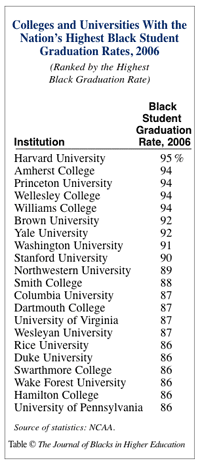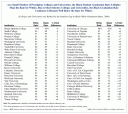Ivy League Diaspora
Although it’s become old news (the first reports on this subject that I encountered were published in 2006), the fact that a disproportionate number of Black students admitted to selective U.S. institutions are first- and second-generation immigrants from Africa, the Caribbean, and (less frequently) from Europe is getting more and more national attention. Here’s a recent article on the subject from the Brown Daily Herald:
More than a quarter – and in some cases nearly half – of black students at selective American colleges and universities are first- or second-generation immigrants, according to a new study appearing in the February issue of the American Journal of Education. Some sociologists say the data throw into question the criteria and purpose behind many education-related affirmative action programs as well as the way diversity is often presented at American universities. Camille Charles, assistant professor of sociology at the University of Pennsylvania and an associate director of the school’s Center for Africana Studies; Douglas Massey, professor of sociology at Princeton; and Margarita Mooney and Kimberly C. Torres, postdoctoral fellows at Princeton’s Office of Population Research, authored the study, titled “Black Immigrants and Black Natives Attending Selective Colleges and Universities in the United States.”
“If you’re a purist, then you’ll think that (this discovery) is not in the spirit of affirmative action. But if you’re a diversity purist, and your idea is to expose everybody to as many different kinds of people as possible, then you’ll think this is great,” Charles told the Chronicle of Higher Education in an article appearing this week.
The report is based on data from a larger project, the National Longitudinal Survey of Freshmen, which is sponsored by the Mellon Foundation and led by researchers at Princeton. The survey looked at 1,051 black freshmen enrolled at 28 selective colleges in 1999. Of those, 27 percent were first- or second-generation immigrants, largely from the Caribbean or Ghana -more than twice the national average of 13 percent for all black Americans aged 18 to 19.
The number climbed sharply when the schools in question were narrowed to the most selective. At the four Ivy League schools included in the survey (Penn, Princeton, Yale and Columbia), 41 percent of black students were first- or second-generation immigrants.
These numbers would seem to challenge the surprisingly persistent belief among a small but no less disturbing cadre of white and (surprising) non-white scientists and pseudo-scientists in the genetically-based intellectual inferiority of Black people(s). They also raise a number of interesting questions about
- the long-term impact of enslavement and enforced segregation on the descendants of U.S. Black slaves.
- the need for educational initiaves directed specifically at the Black descendants of U.S. slaves.
- about the need for colleges to develop programming (speakers series, coursework in African and Afro-caribbean music, literature, history, and languages) that addresses the interests of a broader and diasporically-based population of students of African descent.
In the long term, I believe that some of these issues will be addressed. In the short term, however, I predict a public discussion of why “homegrown” Blacks can’t/don’t do as well as their immigrant brethren and sistren. I also predict that a surprising number of African Americans will join those voices that decry the failure of U.S. (non-immigrant) Blacks to “do better.”
Stay tuned.
Posted by Ajuan Mance
Posted in Academia, African Americans, Black Students, race, Slavery, Stereotypes | 2 Comments »



